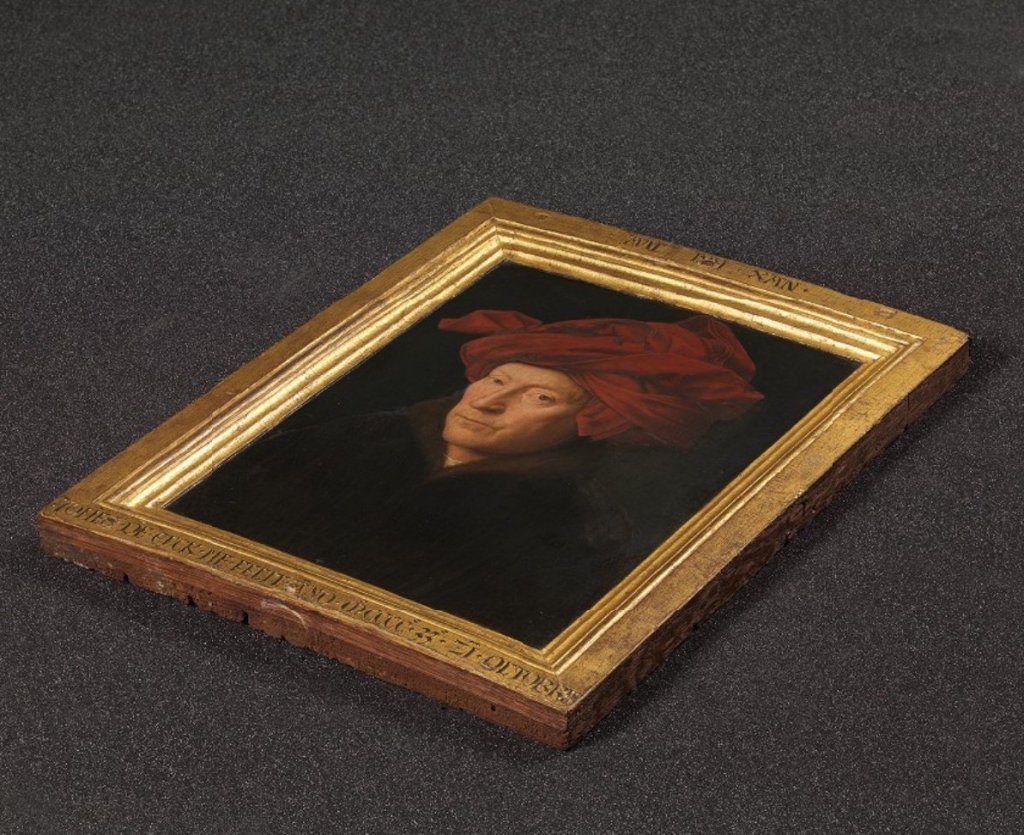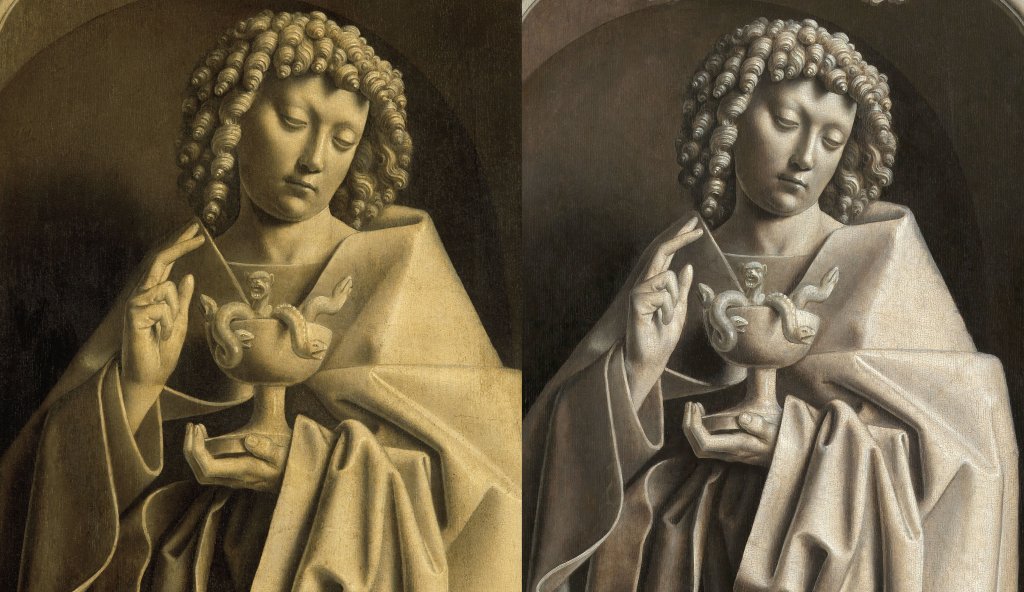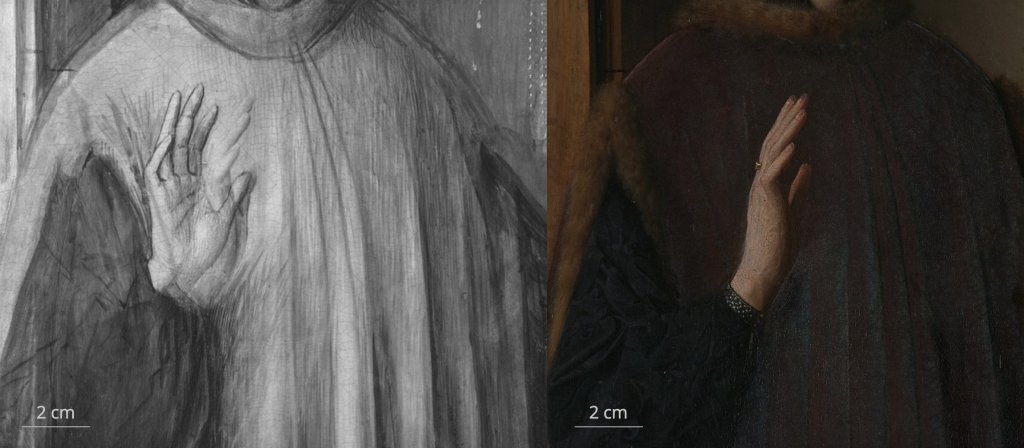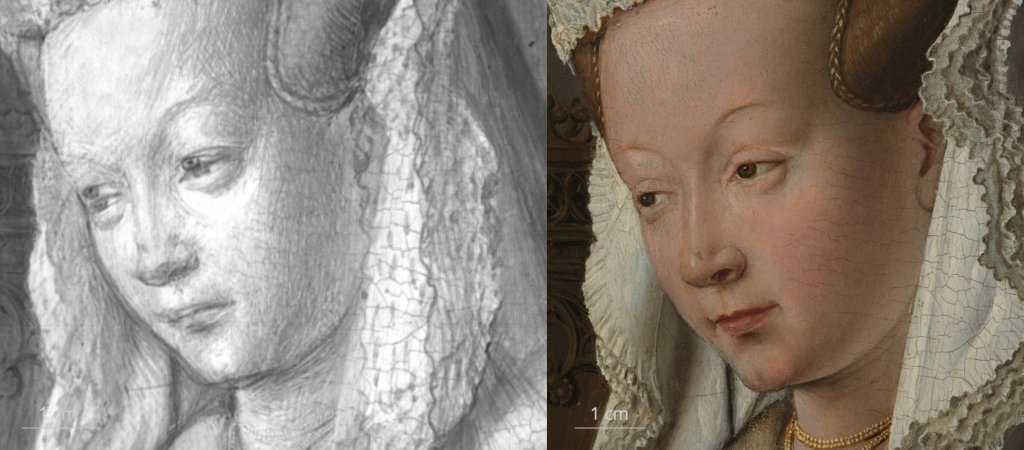Closer to Van Eyck with Bart Fransen & VERONA project
Contemporary technology and restoration have revealed a new Van Eyck. We discuss these topics with the director of the VERONA project Bart Fransen.
We have been delving into the ways old master paintings are given new life through contemporary technology for some time, for example here is our article about the analysis of a painting by Kokoschka. Our recent focus has been on Italian renaissance, with the stunning example of Leonardo’s drawings and the restoration of his Adoration of the Magi (link to both our writings here). For this article, we expand horizons to include Flemish renaissance in the occasion of the completed restoration of Van Eyck’s lower register of the Ghent Altarpiece, but also our first contact with the VERONA project. Despite its name reminding of picturesque Italian towns, the project title actually stands for Van Eyck in Open Access, and it consists of a breathtaking online archive called Closer to Van Eyck, comprising high-quality, standardised technical images of the Flemish master’s paintings. This material not only gives insight into the restoration stages, but also allows further research and inspiring discoveries of previously unseen details. We sat down with Dr Bart Fransen from the Royal Institute for Cultural Heritage in Brussels, the director of the VERONA project and a knowledgeable expert of Van Eyck’s paintings.

Can you share some history of the Royal Institute for Cultural Heritage in Brussels and its focus on Flemish 15th century painters?
Bart Fransen: The Institute was created after World War II with the main focus on the conservation and scientific study of Belgian heritage, and to make an inventory of it. For the Flemish painters of the 15th century, they made an exception and created a specific study centre focusing on all the artworks belonging to this branch of art history worldwide, not only limited to Belgium. That is why we have an archive here with material we collected from museums and collections all over the world, built over a period of 70 years, and covering up to 6000 paintings. Each of them was catalogued, documented, photographed, and researched. We have also edited publications to disseminate this knowledge and help academic research.
A major restoration of the famous Ghent Altarpiece by Van Eyck is coming to a close. Can you tell how this project started?
Bart Fransen: The restoration started with concerns about the preservation of the painting following a pre- examination study in 2010. We should keep in mind that the work was not kept in ideal circumstances. For example, it was in a church where the climate control was not as easy as it would be in a museum. Its glass cage would indeed protect it from vandalism and theft, but made it subject to stress from heat and humidity coming from the lamps inside. These conditions were worrying. After the assessment, the state of conservation was nonetheless surprisingly good, but fixation was still needed. For example, some dust was entering the cracks in the wood and was lifting up the layer of paint. These issues were urgently resolved in 2010 already. Afterwards, once the budget was approved, we focused on cleaning. We especially removed all the varnish that got oxidised with time, and covered the painting with a yellow patina.
What was discovered during the restoration?
Bart Fransen: There were amazing surprises. After both the 20th century synthetic varnish and the older organic varnish were removed, restorers found a large number of retouches, especially from the 16th century. An important guide to navigate these overpainted layers was a copy from 1558, which gives a grasp of how the painting looked like at that time, even though it is clear many changes to the original had already been made. Looking at just the outside of the work, it became clear that about 70% of the surface was overpainted. This means that many scholars before us, including big names like Panofsky and Friedlander, were actually looking at a 16th century over-painting instead of Van Eyck’s work.

Can you give an example of what emerged from the under-layers?
Bart Fransen: The shape of the niches for example, which was initially thought to be round and Van Eyck actually painted squared. Iconographic elements appeared too, such as a spiderweb painted in the room of the Virgin, an element typical of Van Eyck but completely cancelled by the overpainting of the 16th century. Colours revealed themselves as much brighter, and the trompe l’oeil shadows of the frames in the Annunciation scene became more marked. The stone of the painted statues was also possible to identify as marble or alabaster as opposed to some kind of sandy stone as initially thought. And then of course, the face of the lamb itself, which was less naturalistic in the original, despite the fact that Van Eyck was really interested in realistic depiction of nature and faces. This is still a big puzzle for art historians.

What was the reason for these changes in the 16th century? Was it a matter of different taste?
Bart Fransen: There were many reasons, and a difference of taste is indeed one of them. For example, draperies were preferred softer than they were in the original painting. However, in the 16th century they were already concerned with conservation and protection of the painting. The lower register for example must have suffered more from candles, and that is why it was overpainted more than the upper one.
Are there any clues as to who made these changes?
Bart Fransen: There are two important painters, Lancelot Blondeel and Jan van Scorel, that according to documents were asked to clean the painting. It is clear that such an important artwork would not be touched by anybody but those belonging to the very top of the painter guild.
Was there a debate during the restoration on whether to keep the overpainted layers?
Bart Fransen: There was a big international committee overviewing the restoration and in charge of making this kind of intellectual decisions. They represented many different approaches to restoration, a diversity that was needed for such an important task. Their decision to remove the 16th century overpainting was unanimous. A similar committee would not have taken this decision 20 years ago when the technology of Macro X-ray fluorescence (MA-XRF) scanning was not available. This is a technique developed by University of Antwerp and TU Delft that allows to get a picture of the different chemical elements that are present in the pigments, while providing a realistic image of how they are distributed on the surface.

What did the restoration reveal about the creative process of Van Eyck? For example, did he use many preparatory drawings?
Bart Fransen: In the case of large paintings like the Ghent Altarpiece, Van Eyck used a large number of preparatory drawings, which were made on a first underlayer. We initially thought there was a clear progress from preparatory drawing to paint, but we now understand his process was not so straightforward. Indeed the painting stage was much more expensive, and before commencing it, the painter would have waited for the approval of his patron based on the preparatory drawing. However, Van Eyck would still make many changes in the painting stage, constantly improving effects and composition.
Is this the case of the multiple eyes and hands in the Arnolfini’s portrait that are revealed in the scans?
Bart Fransen: Those changes were in fact made in the drawing stage, with Van Eyck trying different shapes and positions of the human body. But there are changes in the painting stage too, for example the adding of the fountain in the central panel of the Ghent Altarpiece. There are holes in that paint layer through which we can see the green of the grass underneath, showing how that fountain was painted over a layer of pigments and not on a preparatory drawing. This must have been an afterthought of Van Eyck. Conversely, the artist sometimes would decide not to paint what he had originally drawn, for example the purse of the Chancellor Rolin in the homonymous painting in Paris.

Can you tell us something about the way Van Eyck worked with his assistants?
Bart Fransen: We can indeed expect that for a big artwork such as the Ghent Altarpiece, which covers about 80 percent of the artist’s entire painted oeuvre, a number of workshop assistants must have been involved. Moreover, the outside inscription confirms that his brother Hubert Van Eyck began the painting, and Jan finished it. His younger brother Lambert and sister Margareta were possibly involved too. The question of who did what is as old as art history, and we will not easily answer it, as it depends on identifying a different painting style for each painter. The point is rather to understand who took care of which painted layer, or painting stage. For example, the assistants might have prepared the panel, and leave the final retouching to the masters, including the position of the eyes and hands, the shadows, the light effects.
Has technology helped in making conclusion about this workflow?
Bart Fransen: An important step forward in the technical examination of Van Eyck’s oeuvre has been made by the VERONA project (Van Eyck Research in OpeN Access) for which in the past six years I have been travelling throughout Europe and the US with a small team of art historians, technicians, and a van filled with state-of-the-art equipment in order to examine and document the complete oeuvre of Jan van Eyck according to a standardised protocol. Since the same cameras, same lighting, same photographer and identical protocol have been used for all of the paintings, the documentation provides a unique dataset that facilitates objective comparative research. Moreover, thanks to a partnership with Brussels University and Universum Digitales, all scientific imagery has been made available online in open access through the website. Scholars are now able to study for the first time the differences and similarities in the artist’s technique on the basis of the same high resolution imagery. In 2018 the Closer to Van Eyck website won the E-Gov Award by Agoria, Belgium’s largest federation in the technological sector. Recently the VERONA project received the European Heritage Award / Europa Nostra Award in the category Research. So I invite everybody, scholars, restores, art historians and art amateurs, to have a close look at the website and explore the oeuvre of Jan van Eyck. The results of the project will also be presented this fall in an exhibition at BOZAR, Brussels titled Facing Van Eyck. The Miracle of the Detail.
November 25, 2020
